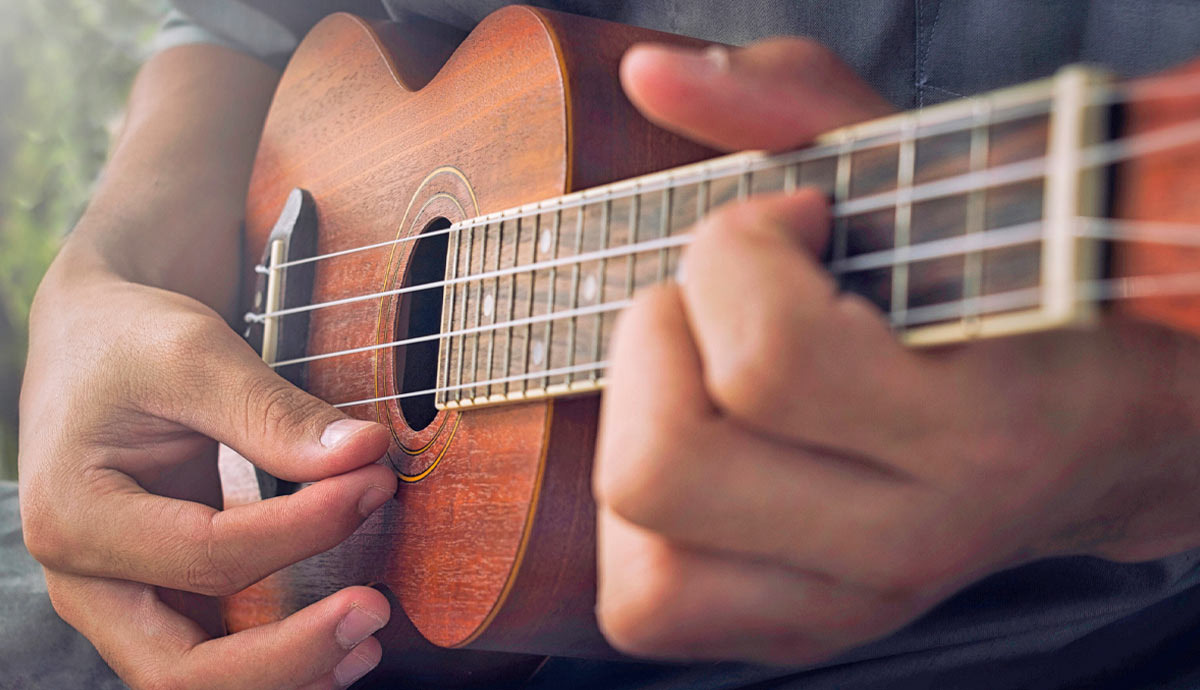
The ukulele, a beloved instrument with global appeal, was invented in Hawaii by Madeiran Portuguese immigrants in the 1880s. These settlers brought with them small guitar-like instruments, that became precursors to the ukulele, during the colonization of Hawaii. Initially a hybrid of Madeiran instruments, the ukulele was championed by King Kalakaua and Queen Lili’uokalani, to play a key role in the revival of Hawaiian culture, including the modern hula. Introduced to the world in 1915, it sparked a global craze. Today, the ukulele remains a much loved, iconic instrument worldwide.
From Madeira to Hawaii

In the mid–1800s, a series of natural disasters devastated the Portuguese island of Madeira, prompting tens of thousands of Madeirans to emigrate to the islands of Hawaii, then known as the Sandwich Islands. This influx brought significant changes to Hawaii – including a transformation of musical culture.
According to legend, elated Madeirans arrived in Hawaii and treated the locals to nightly street concerts. The Hawaiians were deeply impressed by the musician’s nimble fingers moving access the fretboard of their strange little guitars like a “jumping flea.” The instrument became known as the ukulele – from “uku” (flea) and “lele” (jumping) in the Hawaiian language.
Among the migrants to land in Hawaii aboard the SS Ravenscrag in 1879 were three Madeiran cabinet makers: Manuel Nunes, Jose do Espírito Santo, and Augusto Diaz. these men initially worked on the islands sugar plantations before moving to Honolulu. Between 1884 and 1885 they set up their own woodworking shops and began making and selling the first ukuleles.
A Hybrid Instrument

The first ukuleles made in Hawaii were hybrids based on two Portuguese Madeiran guitar-like instruments. The machete (or braguinha), a small four-stringed instrument that was strummed or plucked, and the the rajão, a slightly larger five-stringed instrument.
The ukulele retained the general the general size and double-bulged shape, wooden construction, and 17-fret fingerboard of the machete. However, it adopted the tuning of the rajão’s top four strings (D-G-B-D).

While traditional machetes were classically made from spruce, juniper, and other light woods found on Madeira, Hawaiian ukuleles were crafted from Koa, a light honey-brown wood native to Hawaii. This incredibly light thin wood gave the instruments their distinctive tone and sound.
Royal Patronage

The colonization of Hawaii severely impacted native Hawaiian culture. In response to the influx of missionary and European influence, the last King of Hawaii, King Kalakaua, promoted Hawaiian cultural practices and embraced the invention of new traditions.
Along with his wife – and later Queen – Lili’uokalani, King Kalakaua was an early supporter of the ukulele, using it to help revive the indigenous Hawaiian art of the hula. By changing the tempo of the dance and incorporating the ukulele, he leopard establish a modern tradition of hula. Lili’uokalani famously composed the Hawaiian ukulele classic “Aloha Oe.”
The ukulele featured prominently at royal festivals and gatherings, with Kalakana often entertaining private guests with his ukulele skills. Above all, the King and Queen’s patronage encouraged Hawaiians to adopt the instrument and develop their musical styles of playing.
Legacy of the Ukulele

As time passed, the original Madeiran makers of the ukulele gave way to a new generation of Hawaiian luthiers. In 1915, Jonah Kumalae, a Hawaiian businessman and musician arrived in San Fransisco and introduced the ukulele to the Pan Pacific International Exhibition, sparking a worldwide craze.
The ukulele gained widespread popularity in the 1930s through performers like Ukulele Ike (Cliff Edwards) in the USA and George Formby in Great Britain. By the 1950s, mass-produced plastic ukuleles were cheap and widely available. Popular enthusiasts included The Beatles and Elvis Presley. Renowned guitar makers from Martin to Fender and Gibson all make ukuleles.
Today, the most famous Hawaiian ukulele workshop, Kamaka (est. 1916) continues to make ukes of all shapes and sizes on South Street, Honolulu. The instrument, whether a soprano, concert, tenor, or baritone ukulele has become a global musical phenomenon, both popular and famous the world over.










